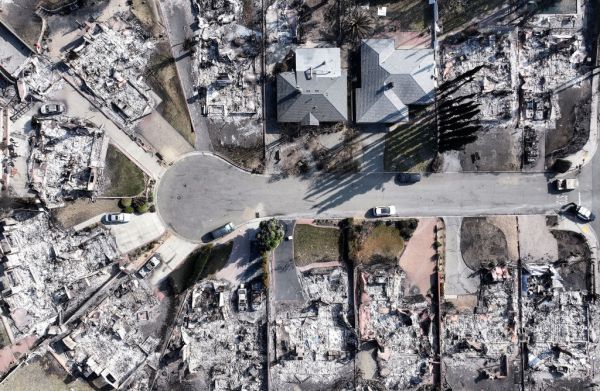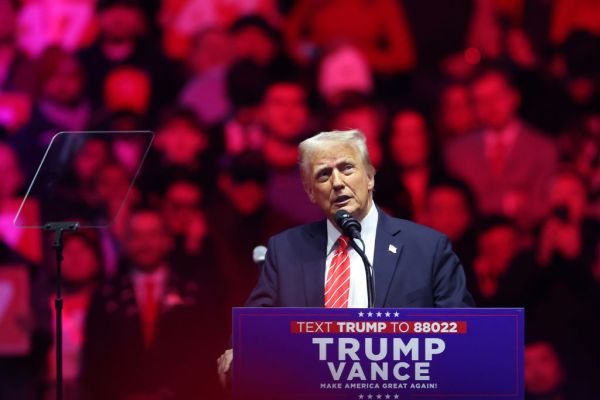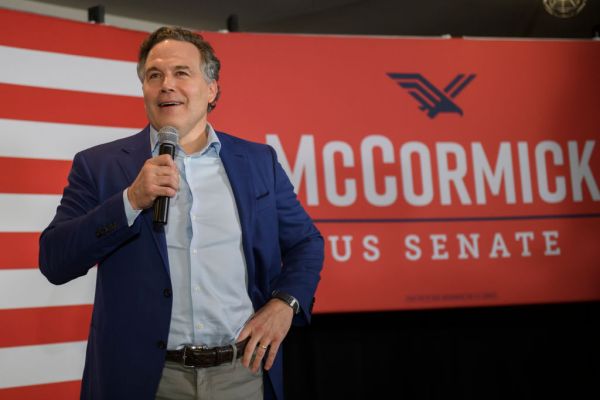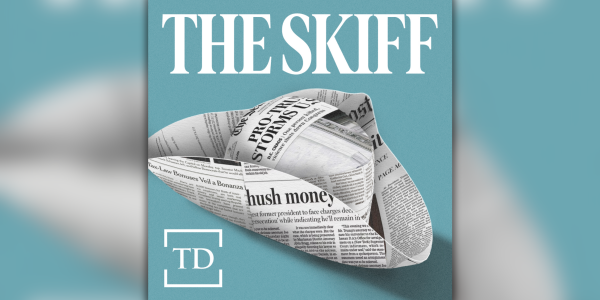Campaign Quick Hits
Add Affirmative Action to the List for 2022: Next week, the Supreme Court will consider whether to take a new challenge to affirmative action policies at private universities. Specifically, a group of students is challenging Harvard’s admissions policies, claiming that they intentionally discriminate against Asian students and use rational balancing to achieve the same mix of students in every class. The question for the Court is whether this violates the civil rights law that says “No person in the United States shall, on the ground of race … be subjected to discrimination under any program or activity receiving Federal financial assistance.” In the last month, the Court has already taken cases on abortion and gun rights for this fall—this could be another blockbuster topic sure to have enormous political implications heading into the 2022 midterm election. The question is whether victories in all three areas for the right would be a rallying cry for the left and fuel Democratic turnout with calls to “pack the court.”
Ranked Choice Voting Hits Gotham
The Democratic Primary for the New York Mayor’s race is June 22—only three weeks away—and it’s getting interesting. Andrew Yang started out as the clear frontrunner. He led in every poll and had the obvious advantage in name ID after his presidential campaign earned him national attention as the quirky candidate who wore a M.A.T.H. pin and hat—short for Make America Think Harder—and ran on policies like universal basic income that fall outside the two major parties’ usual policy prescriptions. But the polling has shifted, and now Brooklyn Borough President Eric Adams and former sanitation commissioner Kathryn Garcia are potentially tied with or even leading Yang. BUT—and this is a big but—nobody really has any idea how this election is going to turn out, because NYC is using ranked choice voting for the first time. And I am PUMPED. Here’s why:
-
This could make polling irrelevant. National, presidential-level polling should be the easiest type of polling to get right—a huge pool of voters with high turnout and lots of demographic data available. And we all know how that’s been turning out lately. But using polling to accurately predict the outcome of a mayoral primary using ranked choice voting? Yowzers. Mayor’s races have lower turnout. Primaries have much lower turnout. Ranked choice voting isn’t just about how people rank all the candidates in such a crowded field, it’s also about whether they rank them at all. If you check out the polling so far, it’s all asking who the voter’s “first choice” is. Well, that’s interesting information if you want to know who will make it to the top 3-4 candidates, maybe—but it doesn’t tell you much at all about who will win when the field winnows down to two, because they can’t predict who the two will be, and how many of the 3rd candidates’ first-choice voters will rank other candidates, and who their second-or third-ranked candidates will be … I LOVE IT! No front runner bias. No pundits over-shadowing the dynamics of the race. So many known unknowns!
-
Name ID will become less important. See above. If the 2016 Republican primaries had all used ranked-choice voting, the world might look pretty different right now. Assume that the majority of Cruz voters ranked Rubio second and vice versa—and the Kasich/Bush voters always ranked Trump last and the Carson/Christie voters always ranked Trump second—and Trump probably doesn’t win any of the first three primaries. The point is ranked choice voting—in theory—fixes the problem of a crowded field in which a whole bunch of candidates divide up the same majority of voters allowing the united minority to win. And the united minority often picks the candidate that is most familiar—hence the name ID problem in crowded fields.
-
This could lower partisanship. If voters had the opportunity to think about candidates as second or third choices, they might be less likely to break off into tribes during primaries—or even general elections. Now imagine how campaign tactics would change if candidates knew they could still win as everyone’s second choice candidates. Campaigns would have very little incentive to alienate voters by trying to consolidate a smaller and smaller slice of the base. Again, in theory.
Of course, these sorts of predictions always line up more neatly on paper than in the hurly-burly of real politics. Alaska and Maine recently switched to ranked choice voting for most of their state and federal elections, and we can actually see whether my predictions have been borne out there. Jesse Clark, a graduate researcher at the MIT Election Lab and a Ph.D. candidate at the Massachusetts Institute of Technology, recently studied how it’s been going in Maine, and here’s what he found (spoiler: I should perhaps lower my expectations):
I found that RCV produced significantly lower levels of voter confidence, voter satisfaction, and ease of use. It also increased the perception that the voting process was slanted against the respondent’s party. … I found that voting for non-major party candidates — which reformers tout as “sincere voting” instead of voting for a candidate simply due to their realistic chance of winning — was increased by 5 points among the respondents who were given the RCV ballot instead of the traditional ballot.
…
One of the main claims made by reformers about RCV is that it will make campaigns more civil, as campaigns will have an incentive to seek the second-place vote of supporters of different candidates. To study this claim, I first conducted a difference-in-differences analysis on independent expenditures for and against candidates. In this analysis, I found that negative spending increased significantly in Maine following the implementation of ranked-choice voting, casting doubt on the claim that RCV makes campaigns more civil. … I found that the 2018 campaign was even more negative than in paired districts around the country.
In my research on ranked-choice voting and its impacts on individual voters and the political system, I’ve found it seems to boost non-major-party vote share (and increase “sincere voting”), but it does not have most of the behavioral and campaign effects that reformers tout as potential benefits of the system.
Ok, but, like, what does this guy know anyway, right? I’m excited to see what happens in New York City—the largest number of voters in the US to ever try RCV—and my hopes remain high.
Chris is back, of course, with a look at a special election. Best line? “If Walter White had a congressional district, it would be this one.”
New Mexico Special Offers Early Test for Biden Coalition
Today is Election Day, at least if you live in New Mexico’s 1st Congressional District. And while it’s highly likely that Democrats will win the special election to fill the seat left vacant by the appointment of former Rep. Deb Haaland as secretary of the Interior Department, how the final tallies stack up may tell us a great deal. This is our first really useful look at the shape of the electorate heading into midterms, and it’s happening in a district that can provide insights on key voter blocs that will decide control of the House next year.
You may not have any “level three” green chile salsa to stimulate that Albuquerque feeling, but you can still imagine the district. It covers most of New Mexico’s largest city and the suburbs of Bernalillo County, as well as some of the adjacent tribal lands, before stretching east through the Manzano Mountains to the rural flats of Torrance County in the center of the state. The district is pretty evenly split between Anglo and Hispanic residents, and has a median household income about $7,000 below the national average. If Walter White had a congressional district, it would be this one.
The seat has been in Democratic hands since the blue wave of 2008. Haaland’s two Democratic predecessors, Martin Heinrichs and Michelle Lujan Grisham, both also left for larger roles. He’s now the state’s senior senator and she’s the sitting governor. It’s prime political real estate. Democrats have picked Melanie Stansbury, a state representative who in 2018 flipped a longtime Republican district on the city’s east side and who previously spent years working in Democratic politics in D.C. Republicans are backing three-term state Sen. Mark Moores, a former GOP staffer who lobbied for the state’s dentists before running for the statehouse in 2012. With two competent, basically boring candidates, there won’t be any freak factors on which to blame the results. This is a straight-up red v. blue faceoff.
Democrats have averaged almost 59 percent of the vote in the district’s House races since 2010, on par with what Democratic presidential candidates have done over the same period. President Biden got 60 percent of the vote there last year. So that’s the benchmark for Stansbury: a win by 15 or so points. Now, she and her fellow Democrats know how important special elections are; not just in showing what’s coming down the pike but in actually shaping the upcoming midterm terrain. By this point in 2017, there were already clear signs of the coming blue wave of 2018. But that expectation itself helped Democrats raise money and recruit candidates. Special elections like these tell us politics nerds a lot about the electorate, but can also be used by partisans to create self-fulfilling prophecies.
To that end, Democrats are overspending on what appears to be a safe seat. It’s the smart choice not just for the reasons mentioned above, but also because the consequences of a surprise defeat would be devastating. It’s going to be hard enough for Democrats not to lose their nerve as they think about the midterm curse and 2022. If they become convinced that Biden is in for a shellacking, retirements will spike and party unity will break down as individual members try to save their own skins and look for scapegoats. This pressure raises the stakes and shifts the incentives for special elections beyond the value of the seat itself.
If Stansbury comes through with more than 55 percent of the vote, Democrats can feel confident that the new Biden coalition is healthy and holding. If she significantly underperforms Democrats in recent history, it will be cause for alarm on the blue team. If she loses, it could be the start of a very bad 15 months for Democrats.
(Editor’s note: We’d be remiss if we didn’t use this opportunity to point you in the direction of Chris’s new limited-run podcast for The Dispatch: The Hangover, a multi-part autopsy of what went wrong for the Republican Party in 2020. Check it out here, or wherever fine podcasts are distributed!)
Last up, Audrey is still keeping a close eye on the governor’s race in Virginia. Her latest piece is up on the website, but I’ve included a few nuggets here to whet your appetite.
Can Republicans Ever Win Again in Virginia?
“For the last 15 weeks, I’ve traveled nearly 26,000 miles. I’ve had a chance to visit with tens of thousands of Virginians and what I’ve heard over and over again, over and over, is a sense of frustration, anger, but also hope and optimism,” Virginia Republican gubernatorial nominee Glenn Youngkin told a crowd of rally attendees last Monday.
Youngkin, who won the Virginia GOP’s nomination on May 10, is gearing up for an expensive and hard-fought race against likely Democratic nominee Terry McAuliffe, Virginia’s former governor who is expected to win his state party’s primary on June 8.
The first-time GOP candidate may have boatloads of cash—conservative estimates put his net worth at more than $200 million—but the odds are against him: No Republican has won a statewide race in Virginia in 12 years.
That said, election analysts are quick to point out that Virginia Democrats have two big hurdles to overcome this fall. One, Donald Trump is no longer in the White House. “There is not a Trump tailwind for the Democrats to ride anymore,” said Chaz Nuttycombe, director of CNalysis, a forecasting group that specializes in Virginia races and state legislative elections. “They would not have the trifecta, which is the House of Delegates, State Senate, and governor, if Trump lost in 2016.”
And two, this election is expected to be a referendum on President Joe Biden’s administration. Virginians have elected a governor opposite the president’s party every single election cycle since 1977 but one. (The only exception to this trend was in 2013, when McAuliffe pulled off a narrow victory against Ken Cuccinelli.) As we inch closer to November, Youngkin is betting that burgeoning backlash against the Biden administration’s policies will pull independents and moderate Democrats into his camp.
Read the rest HERE.










Please note that we at The Dispatch hold ourselves, our work, and our commenters to a higher standard than other places on the internet. We welcome comments that foster genuine debate or discussion—including comments critical of us or our work—but responses that include ad hominem attacks on fellow Dispatch members or are intended to stoke fear and anger may be moderated.
With your membership, you only have the ability to comment on The Morning Dispatch articles. Consider upgrading to join the conversation everywhere.